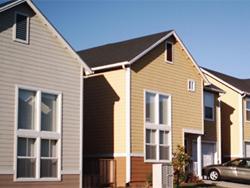Cost of Existing Home Exceeded Cost of New Home in Q2
Washington, DC, August 22, 2024-As a result of limited resale inventory and measures by home builders to increase housing affordability, the median price on an existing home in the United States during the second quarter of 2024 was higher than that of a new home. Therefore, a family needed to spend more of their income to buy a typical existing home than a typical newly built home.
The National Association of Home Builders (NAHB)/Wells Fargo Cost of Housing Index (CHI) found that in the second quarter of 2024, a family earning the nation’s median income of $97,800 needed 38% of its income to cover the mortgage payment on a median-priced new home. The median price of a new home in the second quarter was $412,300 vs. the $422,100 price for a median existing home, therefore the share of income needed to buy a typical existing home was higher, at 39%.
“With the nation facing a housing affordability crisis, additional, attainable housing supply is the only way to sustainably ease housing cost burdens for American families,” said NAHB chairman Carl Harris, a custom homebuilder from Wichita, Kansas. “NAHB’s 10-point plan to tackle the housing affordability crisis gets at the heart of the problem, which is addressing impediments such as excessive regulations, inefficient zoning local zoning rules and permitting roadblocks that prevent builders from increasing the nation’s housing supply.”
The CHI also found that low-income families, defined as those earning only 50% of the median income, would have to spend 77% of their earnings to pay for a median-priced new single-family home in the second quarter.
The index debuted in the first quarter of this year, and there was no change in the percentage of a family’s income needed to purchase a new home (38%) between the first and second quarters of 2024, and the income percentage for low-income families remained the same in both quarters as well (77%).
However, those seeking to purchase existing homes in the U.S. found their costs rising in the second quarter. A typical family needed 39% of their income to pay for a median-priced existing home in the second quarter, up from 36% in the first quarter. A low-income family needed 79% of their income vs. 71% in the previous quarter.
“While interest rates are expected to gradually move lower in the coming quarters, home price growth will likely slow as inventory levels rise and prospective buyers continue to experience challenging affordability conditions,” said NAHB chief economist Robert Dietz.
